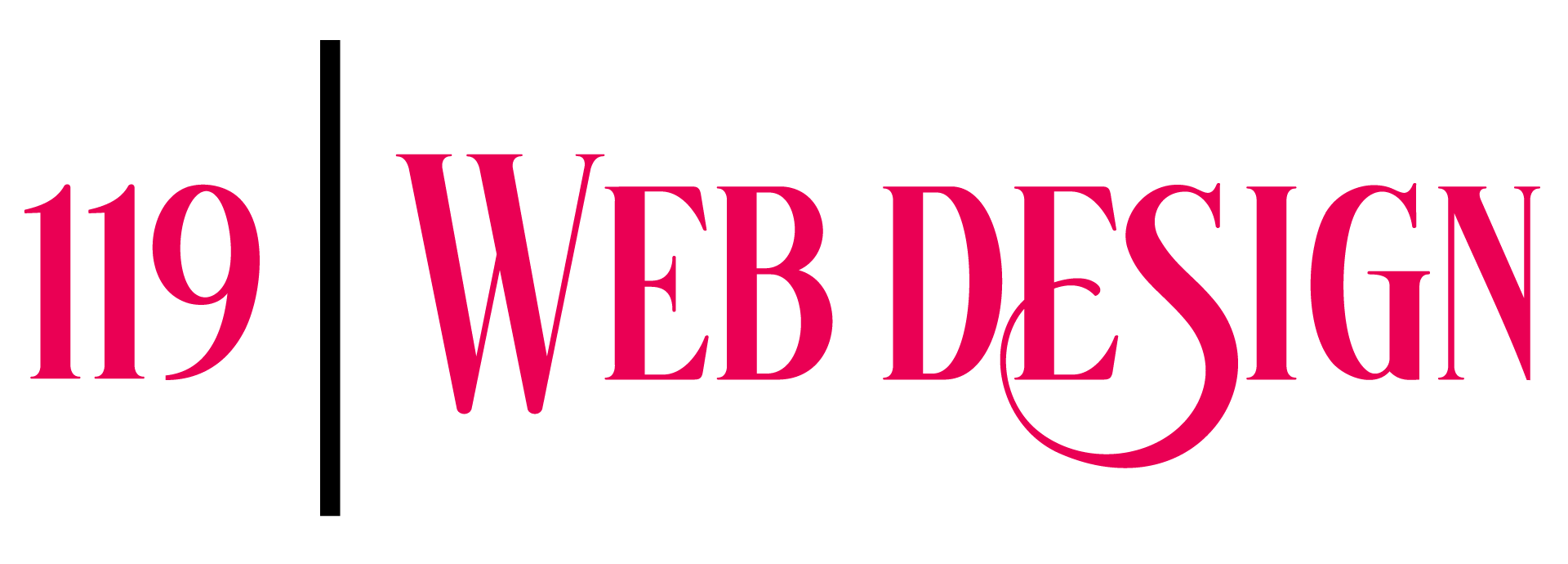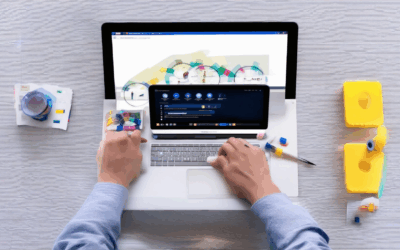Looking to elevate your website’s effectiveness and user experience with a sleek, modern aesthetic? Minimal web design has emerged as a powerful approach to create visually appealing, functional, and conversion-driven websites. By focusing on simplicity, clarity, and efficiency, minimal web design strips away unnecessary elements to reveal the essence of your brand, ensuring your message resonates strongly with visitors. Whether you’re building a new site or optimizing an existing one, mastering minimal web design tips can lead to a more engaging and user-friendly online presence. In this article, we’ll delve into the key elements of minimal web design, explore real-world examples, and provide actionable tips to help you achieve a design that captivates and converts. From streamlining interfaces to leveraging clean layouts and efficient navigation, discover how minimalism can transform your website into a hub of elegance and functionality.
Key Takeaways
– Simplicity is key: Minimal web design focuses on clean layouts and removes visual clutter to enhance user experience.
– White space matters: Strategic use of negative space improves readability and creates a sense of openness.
– Typography plays a role: Clean, readable fonts like Helvetica or Arial are essential for a minimalist aesthetic.
– Color palette is limited: Neutral tones and subtle accents help maintain a cohesive and uncluttered design.
– Navigation should be intuitive: Streamlined menus ensure users can easily navigate without confusion.
– Content presentation is focused: Minimalist designs highlight essential information with centered text and bold headlines.
– Whitespace is strategically used: Proper spacing enhances balance and improves overall user interaction.
– Responsive design is crucial: Minimalistic websites adapt seamlessly to various devices, ensuring a unified experience.
– Functionality over flair: Minimalist designs prioritize smooth interactions while maintaining a sleek appearance.
– Consistency builds cohesion: Uniform design elements reinforce the minimalistic theme and create a cohesive look.
Explore more web design insights by visiting 119WebDesign.com.

What Makes a Website Design Effective with Minimalistic Principles?
A website design is effective when it employs minimalistic principles thoughtfully, balancing simplicity with functionality. Here are the key elements that contribute to an impactful minimalistic design:
- Clean Layouts : Minimalistic designs prioritize organization, ensuring that content is presented in a logical structure. This avoids clutter and confusion, allowing users to navigate effortlessly.
- Neutral Colors : The use of muted, neutral colors creates a calming effect, reducing visual stress. Paired with complementary color palettes, these colors enhance readability and create a cohesive look.
- Ample Whitespace : Strategic use of whitespace transforms negative space into purposeful elements, highlighting key components like text and images, thereby drawing attention to the most important parts of the design.
- Simple Typography : Sans-serif fonts like Helvetica and Arial are commonly used due to their readability and neutrality, ensuring that text remains easy to read without distractions.
- Smooth Functionality : Intuitive navigation and responsive design are integral to minimalistic effectiveness. Features like sticky menus and mobile-friendly layouts enhance usability, making the site accessible across devices.
- Consistent Design Elements : Uniformity in design elements such as buttons, icons, and fonts fosters brand identity and professionalism, while subtle variations maintain a dynamic feel without compromising simplicity.
- Focused Content : Minimalistic designs eliminate unnecessary sections, delivering content directly to meet the site’s primary objectives, thus enhancing user engagement.
By integrating these elements, a minimalistic design creates a cohesive, user-friendly experience that highlights the site’s essence, ensuring both aesthetic appeal and functional efficiency.
Key Elements of Minimal Web Design
Minimal web design emphasizes simplicity, functionality, and user-centricity. Here are the core components that define this approach:
- Negative Space Utilization : Maximizing the use of white space creates a clean, uncluttered interface, allowing content to breathe and stand out.
- Typography : Clean, simple fonts like sans-serif types (e.g., Helvetica, Arial) are often used to enhance readability and maintain a minimalist aesthetic.
- Color Palette : Limited color usage, typically consisting of neutral tones and a primary accent color, ensures visual cohesion without overwhelming the viewer.
- Whitespace Management : Strategic use of spaces ensures elements are well-spaced, promoting better readability and user interaction.
- Navigation Design : Intuitive navigation, such as a fixed header or a streamlined hamburger menu, enhances user accessibility and keeps the interface uncluttered.
- Content Focus : Minimalist designs prioritize essential content, eliminating distractions to highlight key information effectively.
- Functionality Over Flair : While visually appealing, the focus remains on functionality, ensuring seamless user experiences through smooth interactions and responsive design.
For further exploration of minimal web design principles, visit 119WebDesign.com to discover expert insights and resources.

What Are the Top Tips for Creating a Minimalist Web Design?
Here are the top tips for crafting a minimalist web design:
- Focus on Simplicity : Minimalist design emphasizes clean lines, ample white space, and a focused layout. Avoid overwhelming the user with excessive elements.
- Limit Color Palette : Use a muted and cohesive color scheme. Stick to neutral tones or complementary colors to maintain a sleek appearance.
- Minimal Typography : Use simple, readable fonts like Arial, Helvetica, or Georgia. Avoid elaborate or decorative fonts that can detract from the overall design.
- Consistent Navigation : Keep navigation menus intuitive and minimal. Use a horizontal bar at the top or a simple dropdown menu for easy access.
- Whitespace Optimization : Don’t be afraid to leave empty spaces. White space helps in organizing content and makes the interface less cluttered.
- Mobile Responsiveness : Ensure your design is responsive. Minimalist designs often translate well to mobile screens due to their simplicity.
- High-Quality Imagery : Use images sparingly and ensure they are high-quality. Compress images to maintain fast loading speeds without sacrificing visual appeal.
- Smooth Animations : Incorporate subtle animations or transitions for interactive elements, but avoid flashy effects that may distract users.
- Content Clarity : Present information in a straightforward manner. Use bold headlines and concise paragraphs to ensure content is easily digestible.
- Regular Updates : Keep your design fresh by updating content and layouts periodically. A stale design can lose its appeal over time.
For further exploration of minimalist web design principles, check out Adobe Creative Cloud and Canva for tools that support minimalist design practices. To dive deeper, visit our Web Design Guide for detailed tutorials and best practices.
Explore more resources on 119WebDesign to enhance your minimalist approach.

What Defines a Minimalistic Web Design?
A minimalistic web design is characterized by its simplicity, functionality, and focus on essential elements. Here are the key components that define this style:
- Simplicity : Minimalistic designs prioritize clean layouts and avoid visual clutter. This approach ensures that the user’s focus remains on the content and functionality.
- White Space Utilization : Abundant use of negative space creates a sense of openness and reduces cognitive load. This space is strategically placed to highlight key elements and improve readability.
- Typography : Clean, readable fonts like Helvetica or Arial are commonly used. These fonts are chosen for their simplicity and effectiveness in conveying information without distraction.
- Color Palette : Limited and consistent color usage, often incorporating neutral tones, helps maintain a cohesive and uncluttered appearance. Accent colors may be used sparingly to draw attention to critical elements.
- Navigation : Intuitive and streamlined navigation bars or menus ensure users can easily find their way around the site without confusion.
- Content Presentation : Minimalist designs focus on essential information, presenting it in a straightforward manner. Elements like centered text and bold headlines enhance visibility without overwhelming the user.
- Whitespace : Strategic use of whitespace ensures balance and improves the overall user experience by making the interface more breathable.
- Responsive Design : Minimalistic websites are typically designed to be responsive, providing a seamless experience across various devices without compromising their aesthetic.
- Subtle Interactivity : Interactive elements like buttons are kept simple and consistent, prioritizing functionality over elaborate effects.
- Consistency : Uniformity in design elements such as fonts, colors, and layout reinforces the minimalistic theme, creating an intentional and cohesive look.
By combining these elements, a minimalistic web design achieves an elegant and user-friendly experience that emphasizes functionality and simplicity.
Key Elements of Minimal Web Design
Minimal web design emphasizes simplicity, functionality, and user-centricity. Here are the core components that define this approach:
- Negative Space Utilization : Maximizing the use of white space creates a clean, uncluttered interface, allowing content to breathe and stand out.
- Typography : Clean, simple fonts like sans-serif types (e.g., Helvetica, Arial) are often used to enhance readability and maintain a minimalist aesthetic.
- Color Palette : Limited color usage, typically consisting of neutral tones and a primary accent color, ensures visual cohesion without overwhelming the viewer.
- Whitespace Management : Strategic use of spaces ensures elements are well-spaced, promoting better readability and user interaction.
- Navigation Design : Intuitive navigation, such as a fixed header or a streamlined hamburger menu, enhances user accessibility and keeps the interface uncluttered.
- Content Focus : Minimalist designs prioritize essential content, eliminating distractions to highlight key information effectively.
- Functionality Over Flair : While visually appealing, the focus remains on functionality, ensuring seamless user experiences through smooth interactions and responsive design.
For further exploration of minimal web design principles, visit 119WebDesign.com to discover expert insights and resources.

Key Elements of Minimal Web Design
Minimal web design emphasizes simplicity, functionality, and user-centricity. Here are the core components that define this approach:
- Simplicity : Minimal web design focuses on removing distractions and unnecessary elements to present information clearly and efficiently.
- Clean Layout : A minimalist design avoids clutter, using open spaces, negative space, and minimalistic typography to create a visually appealing interface.
- Focused Content : Minimalist websites prioritize high-quality, relevant content over excessive information, ensuring every element serves a purpose.
- Elegant Typography : Clean, readable fonts like Helvetica, Arial, or Georgia are commonly used to enhance readability and aesthetic appeal.
- Limited Color Palette : Minimal designs often use a restricted number of colors, typically neutral tones, to maintain visual harmony and reduce cognitive load.
- Effective Whitespace : Strategic use of white space ensures that content is easily digestible, guiding the viewer’s eye and focusing attention on key elements.
- Intuitive Navigation : Minimal navigation bars or menus are designed to be simple and accessible, enhancing user experience without complicating the interface.
- Responsive Design : Minimalist websites are often responsive, ensuring seamless viewing experiences across various devices and screen sizes.
- Focus on Functionality : While minimalistic, the design must still support essential functionalities, ensuring smooth user interactions and efficient performance.
By incorporating these elements, minimal web design creates a balanced and user-friendly online experience that prioritizes both aesthetics and usability.
Explore more web design resources on 119WebDesign.com




0 Comments